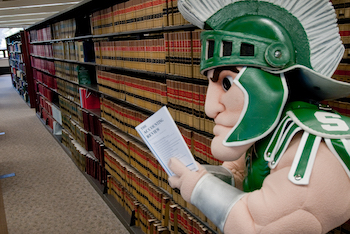Welcome to the Center for Teaching and Learning Innovation
2024 Teaching and Learning Conference: Resources and Updates
Registration is Now Open! Click the Learn More Here button below to register.
Hosted by the Center for Teaching and Learning Innovation (CTLI), the conference will be held over two non-consecutive days (and will require two separate registrations).
This year’s theme is Equitable & Engaging Education for All.
MSU’s Center for Teaching and Learning Innovation provides a spectrum of support for MSU's educators to conceptualize learning, teaching, and programmatic opportunities and develop solutions. Instructors and educators may receive support and consultation, professional development opportunities, learning experience design collaborations, and support for online and blended programs.
Services: Ask questions and get innovative
Ask real people your questions. We support educators at MSU from scheduled consultation sessions to interactive workshops and professional development opportunities. Online and on-demand sessions are available for self-directed study. Longer consultations and projects are possible.
Events, Training, Workshops
See a full list of our upcoming events on our calendar.

Seek Instructional Consultation or Assistance
Any educator is welcome and encouraged to work with a consultant whether their goal is addressing a specific problem, exploring strategies to more fully engage learners, or seeking ideas to [re]energize a course or experience.
Start a Conversation or Request a Project
Contact us to talk through your goals and ideas. We are happy to help you design and deliver or improve learning experiences.

Engage: Find opportunities
Define and achieve your teaching and learning goals. We use fellowships, grants, workshops, and consultations to custom-designed solutions to assist individuals, units, and departments.

Resources: Access places and tools
You can find what you are looking for. Affiliates across campus have a plethora of resources available. This compiled list will expand just as the network of affiliates and collaborators across campus.

